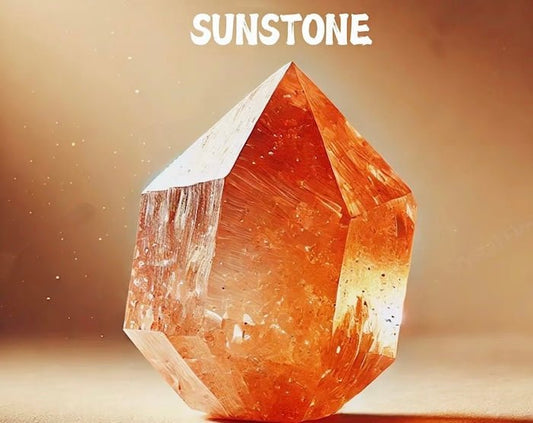How Agate Is Formed: A Deep Dive into Nature’s Striped Masterpiece
By Elara QuinnInside this Article:
- What Is Agate?
- The Geological Formation of Agate: A Step-by-Step Process
- Step 1: Cavity Creation
- Step 2: Silica-Rich Fluid Infiltration
- Step 3: Layered Deposition
- Step 4: Banding and Coloration
- Step 5: Final Fill and Exposure
- The Role of Moganite: A Key Discovery
- Types of Agate and Their Formation Stories
- Where Are Agates Found? Global Hotspots
- Agate vs. Other Banded Stones: Clearing the Confusion
- Modern Research and Unanswered Questions
- Agate in Culture and Crystal Healing
- Science vs. Spirituality
- Final Thoughts
What Is Agate?
Agate is a variety of chalcedony, a cryptocrystalline form of quartz (SiO₂). Unlike single-crystal quartz, chalcedony consists of microscopic crystals arranged in fibrous layers, creating its signature translucency and toughness (6.5–7 on the Mohs scale). Agate is distinguished by its concentric banding, which results from rhythmic silica deposition in cavities within host rocks. These bands can display nearly every color imaginable—reds from iron oxides, blues from manganese, greens from chlorite, and more.
The Geological Formation of Agate: A Step-by-Step Process
Agate formation is a slow, dynamic dance between geology and chemistry, often spanning millions of years. Here’s how it unfolds:
Step 1: Cavity Creation
Agates begin in volcanic rocks like basalt or ancient lava flows. When molten lava cools, trapped gases escape, leaving behind hollow spaces called vesicles (like Swiss cheese holes). Alternatively, fractures can form in rocks due to tectonic stress or temperature changes.
Step 2: Silica-Rich Fluid Infiltration
Groundwater percolates through these cavities, dissolving silica from surrounding rocks, volcanic ash, or hydrothermal vents. This fluid becomes a supersaturated solution of silicic acid (H₄SiO₄).
Step 3: Layered Deposition
As silica-rich water flows into the cavity, it begins to deposit microscopic layers of chalcedony (a mix of quartz and moganite) on the walls. The process alternates between:
- Rapid polymerization: Silica molecules link into chains, crystallizing quickly as fibrous chalcedony (with trace moganite).
- Slow crystallization: Isolated silica units form pure quartz layers over decades or centuries.
These alternating phases create the agate’s iconic banding.
Step 4: Banding and Coloration
The colors and patterns arise from:
- Trace elements: Iron (red/orange), manganese (pink/blue), and other minerals.
- Environmental shifts: Changes in pH, temperature, or oxygen levels during deposition.
- Crystal structure: Twisted, helical growth of chalcedony fibers (discovered via electron microscopy).
Step 5: Final Fill and Exposure
Over millennia, layers build up until the cavity is filled. The host rock eventually erodes, exposing the agate as a rounded nodule or geode.
The Role of Moganite: A Key Discovery
Recent research by Dr. Peter Heaney (Penn State University) reveals that agates contain 10% moganite, a rare SiO₂ polymorph. Unlike quartz’s hexagonal crystals, moganite forms monoclinic structures. This dual mineralogy explains agate’s unique texture and why traditional “ gel theories ” (silica jellies) fail to account for its crystallinity.
Types of Agate and Their Formation Stories
Not all agates are created equal! Their formation environment dictates their appearance:
- Fortification Agate: Jagged bands from uneven cavity walls.
- Waterline Agate: Horizontal layers indicating shifts in fluid levels.
- Fire Agate: Iridescent “ flames ” from iron oxide coatings.
- Dendritic Agate: Fern-like inclusions of manganese/iron.
- Sagenitic Agate: Needle-like rutile or goethite crystals.
Where Are Agates Found? Global Hotspots
Agates form worldwide, but prime locations include:
- USA: Lake Superior (banded agates), Oregon (thundereggs), Arizona (fire agates).
- Brazil: Rio Grande do Sul’s vibrant geodes.
- Germany: Idar-Oberstein’s historic deposits.
- Madagascar: Oceanic blue lace agates.
Agate vs. Other Banded Stones: Clearing the Confusion
While often confused with jasper or onyx, true agate must:
- Be translucent (light passes through bands).
- Contain chalcedony (not opal or calcite).
Modern Research and Unanswered Questions
Scientists are still unraveling agate’s mysteries:
- Fractal Geometry: How do hierarchical banding patterns self-organize?
- Capillary Action: Does water transport via micro-channels drive layering?
- Biomineralization: Could organic compounds influence crystallization?
Agate in Culture and Crystal Healing
Agate’s allure transcends geology—it’s woven into humanity’s spiritual and cultural tapestry for thousands of years. Here’s how this banded gemstone has shaped beliefs and practices across eras:
Ancient Civilizations & Mythology
- Babylonians (3000 BCE): Carved agate into cylinder seals for legal documents, believing its durability symbolized eternal truth.
- Egyptians: Used agate amulets for protection in the afterlife; the Book of the Dead mentions red agate as a heart-strengthening talisman.
- Greeks & Romans: Associated agate with Gaia (Earth goddess) and wore it to invoke fertility, courage, and victory in battle. The “ Pyrrhus Agate ” was said to depict Apollo and the Muses.
- Islamic Tradition: Agate rings engraved with Quranic verses were worn to ward off evil and enhance wisdom.
Traditional Medicine & Folklore
- Ayurveda: Blue lace agate was used to soothe throat chakra imbalances and calm anxiety.
- Native American Tribes: Ground agate into powder for wound healing and carried it during vision quests for grounding.
- Medieval Europe: Agate “ eye stones ” (naturally occurring nodules with circular bands) were believed to cure ailments of the eyes.
Modern Crystal Healing Properties
Today, agate is a cornerstone of energy work, prized for its stabilizing and harmonizing properties:
Chakra Alignment:
- Red/Orange Agate (Root/Sacral Chakras): Boosts vitality and creativity.
- Blue Lace Agate (Throat Chakra): Enhances communication and emotional expression.
- Green Moss Agate (Heart Chakra): Promotes compassion and connection to nature.
Science vs. Spirituality
While no scientific evidence confirms metaphysical claims, studies suggest agate’s microcrystalline structure may interact with electromagnetic fields, a theory explored in bioenergetics research. Skeptics argue its benefits stem from placebo effects, yet its enduring cultural legacy speaks to a deeper, symbolic resonance.
Final Thoughts
Understanding how agate is formed reveals the breathtaking interplay of time, chemistry, and geology. From volcanic vesicles to capillary-driven crystallization, each band tells a story millions of years in the making. Whether you’re drawn to its scientific intrigue or metaphysical allure, agate remains a testament to Earth’s patient creativity.



